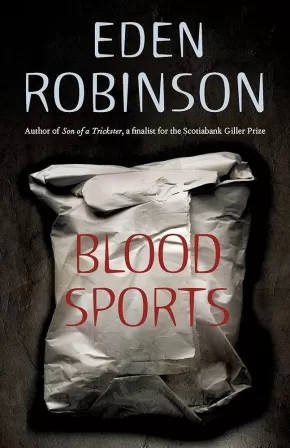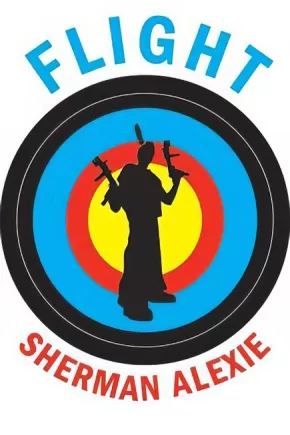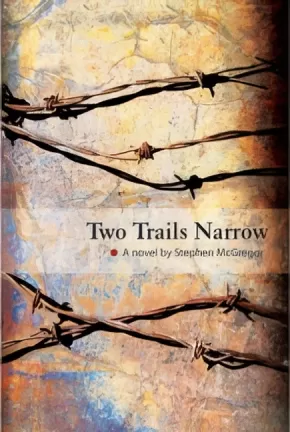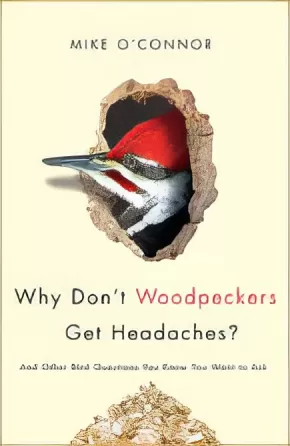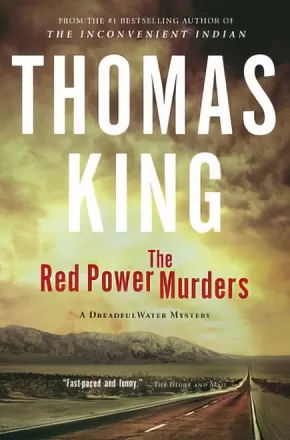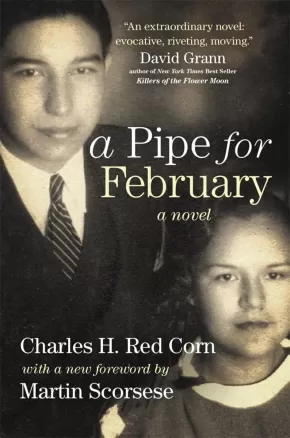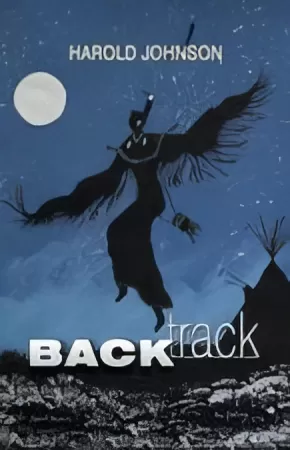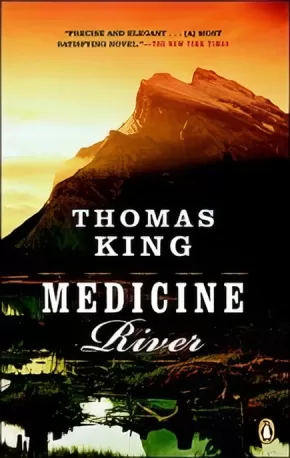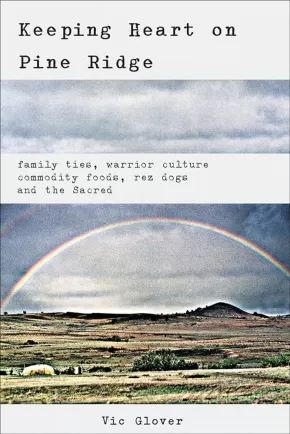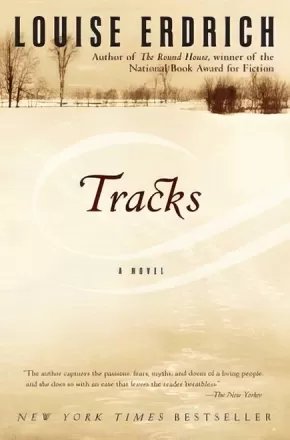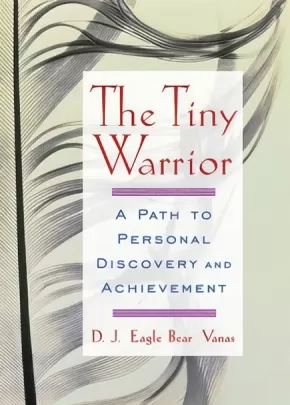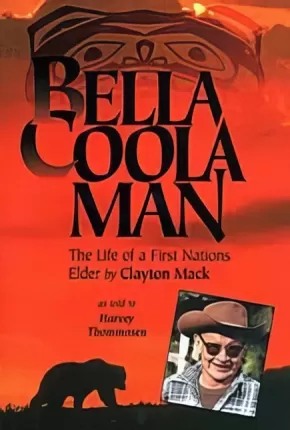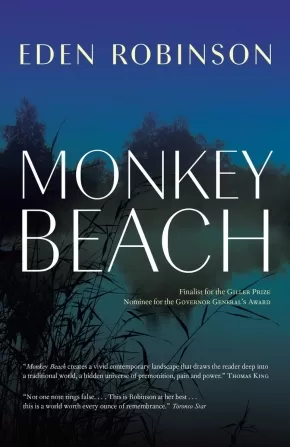Novels
Synopsis:
Four chronically homeless people–Amelia One Sky, Timber, Double Dick and Digger–seek refuge in a warm movie theatre when a severe Arctic Front descends on the city. During what is supposed to be a one-time event, this temporary refuge transfixes them. They fall in love with this new world, and once the weather clears, continue their trips to the cinema. On one of these outings they meet Granite, a jaded and lonely journalist who has turned his back on writing “the same story over and over again” in favour of the escapist qualities of film, and an unlikely friendship is struck.
A found cigarette package (contents: some unsmoked cigarettes, three $20 bills, and a lottery ticket) changes the fortune of this struggling set. The ragged company discovers they have won $13.5 million, but none of them can claim the money for lack of proper identification. Enlisting the help of Granite, their lives, and fortunes, become forever changed.
Ragged Company is a journey into both the future and the past. Richard Wagamese deftly explores the nature of the comforts these friends find in their ideas of “home,” as he reconnects them to their histories.
Additional Information
384 pages | 5.20" x 7.99"
Synopsis:
Blood Sports is the tough, gritty story of the brutal cat-and-mouse relationship between two cousins — Tom and Jeremy Bauer — set in Vancouver’s Downtown East Side.
Tom, a young man, hardly innocent, has been caught up over the years in Jeremy’s world of drugs, extortion, and prostitutes, while Jeremy, vindictive, vicious, either protects Tom or uses him, but always controls him. Added to the mix is Paulie, a junkie two years clean and Tom’s girlfriend, and also the mother of his daughter. This lethal triangle shifts when word gets out Tom has been talking to the police, and men from the past who have a lot to lose reappear. Suddenly Tom and Paulie are pawns in a much larger game, with everything at stake.
With the storytelling skill and engrossing characterizations that have made her previous books so popular, Robinson keeps the tension humming in this riveting novel. This is Eden Robinson at the height of her powers.
Reviews
"Robinson’s sting worked precisely as the trickster in her intended. . . . Like Leonard Cohen, Robinson combines a variety of narrative forms and conflicting styles with such a high degree of technical virtuosity that the very act of reading a cracked and splintered narrative becomes spellbinding, addictive, unstoppable."—Globe and Mail
"Eden Robinson writes with the violent beauty of a seasoned knifefighter. . . . In her hands, language is a weapon that can leave you bleeding, unsure of just how you were cut. Reading Eden Robinson feels dangerous." —National Post
"Blood Sports is a stomach-churning sucker punch of a read for a very talented risk taker."—NOW magazine
"A gripping page-turner of a tale. . . . Blood Sports is a novel of extreme, even diabolical contrasts that explore by the awful and the beautiful faces of Vancouver. . . . Robinson imbues her novel with continual suspense, carnal voyeurism, and of course, hope." —Calgary Herald
"Eden Robinson writes some of the most disturbing fiction that Canadian literature has ever seen."—Quill & Quire
Educator Information
Eden Robinson has referred to this work as a contemporary retelling of Hansel and Gretel.
Additional Information
296 pages | 5.58" x 8.18"
Synopsis:
The best-selling author of multiple award-winning books returns with his first novel in ten years, a powerful, fast and timely story of a troubled foster teenager — a boy who is not a “legal” Indian because he was never claimed by his father — who learns the true meaning of terror. About to commit a devastating act, the young man finds himself shot back through time on a shocking sojourn through moments of violence in American history. He resurfaces in the form of an FBI agent during the civil rights era, inhabits the body of an Indian child during the battle at Little Big Horn, and then rides with an Indian tracker in the 19th Century before materializing as an airline pilot jetting through the skies today. When finally, blessedly, our young warrior comes to rest again in his own contemporary body, he is mightily transformed by all he’s seen. This is Sherman Alexie at his most brilliant — making us laugh while breaking our hearts. Simultaneously wrenching and deeply humorous, wholly contemporary yet steeped in American history, Flight is irrepressible, fearless, and again, groundbreaking Alexie.
Additional Information
208 pages | 5.50" x 8.25" | Paperback
Synopsis:
Two Trails Narrow follows the lives of two Algonquin half-breeds, Ryman McGregor and Abraham Scott, who united as wannabe escapees from the harsh hands of the Jesuit priests at St. Xavier's Residential School outside Spaniards Bay on Lake Ontario. With the help of a kind man and Ryman's sister, they are successful in their escape from the priests and their RCMP trackers. Arriving home on the reserve had its good fortunes but also marked their partition. Their reunion takes place years later, when they are selected to serve as valuable Corporals of one of the best Canadian commando units in WWII. Set against the residential school experience for Native children and the looming shadow of the Second World War, Two Trails Narrow recounts the pain of a young generation of Natives who were pulled into the vortex of forced battle at home and overseas. Through the eyes of two Native soldiers, Ryman McGregor and Abraham Scott, Two Trails Narrow is a remembrance to the courage and depth of the human spirit in an era of hostilities.
Synopsis:
Learn answers to all the bird questions you've always wanted to ask in this beginner's guide, filled with wisdom and humour.
In 1983, Mike O'Connor opened the Bird Watcher's General Store, which might well have been the first store devoted solely to birding in North America. Since that time he has answered thousands of questions about birds, both at his store and while walking down the aisles of the supermarket.
The questions have ranged from:
- inquiries about individual species (Are flamingos really real?")
to
- what and when to feed birds ("Should I bring in my feeders for the summer?")
to
- the down-and-dirty specifics of backyard birding ("Why are the birds dropping poop in my pool?").
Answering the questions has been easy; keeping a straight face has been hard.
Why Don't Woodpeckers Get Headaches? is the solution for the beginning birder who already has a book that explains the slight plumage variations between doves, but who is really much more interested in why birds sing at 4:30 a.m. instead of 7:00 a.m., or whether it's okay to feed bread to birds, or how birds rediscover your feeders so quickly when you've just filled them after a long vacation. Or, for that matter, whether flamingos are really real.
Reviews
"Mike O'Connor knows birds - I mean, REALLY knows them. He has been answering questions about birds for years, and he can deliver the straight scoop with a hilarious twist that makes it unforgettable. Reading this book is almost as much fun as bird watching, and that's saying a lot!" — Kenn Kaufman, author of the Kaufman Field Guide to the Birds of North America
"This is quite possibly the funniest bird book ever written. O'Connor has broken the mold of straight-laced bird books." — WildBird Magazine
"While O'Connor's detailed responses are full of ornithological facts, it's their humor and irreverence that make the book so entertaining." — Audubon Magazine
Additional Information
224 pages | 6.00" x 9.00"
Synopsis:
From the bestselling author of The Back of the Turtle and The Inconvenient Indian comes a wry and irreverent mystery.
Thumps DreadfulWater has never liked surprises—even the good ones are annoying. So it’s no shock that a string of seemingly random occurrences is causing Thumps some real discomfort. First Noah Ridge, the Red Power Native activist, arrives in Thumps’ sleepy town of Chinook. Then the body of a retired FBI agent turns up at the local Holiday Inn. In the background hovers the ghostly presence of Lucy Kettle, second-in-charge of the Red Power movement, a tough woman in a tough place until her disappearance years ago. Now the sheriff wants Thumps to trade in his photography gig for a temporary cop beat. And it won’t be over, Thumps soon realizes, until everyone’s dead—or famous.
Hailed by critics in his first appearance, Cherokee ex-cop Thumps DreadfulWater is back in rumpled but razor-sharp form, doing his laconic, comic best to avoid trouble—and catch the bad guys. Bestselling writer Thomas King has penned a second entertaining DreadfulWater mystery, injected with the author’s characteristic dry wit and biting social commentary.
Series Information
This novel is from the DreadfulWater Mystery series from Thomas King.
Books in this series include:
- Dreadful Water
- The Red Power Murders
- Cold Skies
- A Matter of Malice
- The Obsidian Murders
- Deep House
- Double Eagle
- Black Ice
Additional Information
|
Synopsis:
"A Pipe for February is an extraordinary novel: evocative, riveting, moving. Charles Red Corn illuminates what the Osage people went through during the 1920s, when oil profits had made them fabulously wealthy and when they began to die under mysterious circumstances—systematically targeted for their money. This novel, exquisitely written and filled with revelations, will hold you in its grip and never let you go.”—David Grann, author of New York Times Best Seller Killers of the Flower Moon
At the turn of the twentieth century, the Osage Indians owned Oklahoma’s most valuable oil reserves and became members of the world’s first wealthy oil population. Osage children and grandchildren continued to respect the old customs and ways, but now they also had lives of leisure: purchasing large homes, expensive cars, eating in fancy restaurants, and traveling to faraway places. In the 1920s, they also found themselves immersed in a series of murders. Charles H. Red Corn sets A Pipe for February against this turbulent, exhilarating background.
Tracing the experiences of John Grayeagle, the story’s main character, Red Corn describes the Osage murders from the perspective of a traditonal Osage. Other books on the notorious crimes have focused on the greed of government officials and businessmen to increase their oil wealth. Red Corn focuses on the character of the Osage people, drawing on his own experiences and insights as a member of the Osage Nation.
In the new foreword, director Martin Scorsese reveals how reading A Pipe for February helped him better understand the Osage people and bring Killers of the Flower Moon to the screen.
Reviews
"A Pipe for February is an extraordinary novel: evocative, riveting, moving. Charles Red Corn illuminates what the Osage people went through during the 1920s, when oil profits had made them fabulously wealthy and when they began to die under mysterious circumstances—systematically targeted for their money. This novel, exquisitely written and filled with revelations, will hold you in its grip and never let you go"—David Grann, author of Killers of the Flower Moon—a New York Times #1 bestseller—and award-winning staff writer at The New Yorker
“A Pipe for February subtly weaves together some of the richest themes of contemporary American Indian Literature.” —Robert Warrior, author of Tribal Secrets: Recovering American Indian Intellectual Traditions
Additional Information
284 pages | 5.50" x 8.50" | Paperback
Synopsis:
Against a backdrop of traditional Cree mythology, Johnson's novel creates a tangled murder chronicle and harrowing tale of four Cree brothers, bound to each other through family and tradition, separated from each other by their chosen life paths. As one brother kills, another reinforces the principle of a circle of life, as one capitulates to weakness, another conquers his demons. Driving the action is a manhunt for the killer of conservation officers; but at the heart of the story there is reparation through cultural wisdom and the restoration of traditional beliefs.
Authentic and well-paced, Back Track crosscuts through the cultural ruts, economic conventions, and stereotypes of Cree families living in northern Saskatchewan.
Additional Information
|
Synopsis:
When Will returns to Medicine River, he thinks he is simply attending his mother's funeral. He doesn't count on Harlen Bigbear and his unique brand of community planning. Harlen tries to sell Will on the idea of returning to Medicine River to open shop as the town's only Native photographer. Somehow, that's exactly what happens.
Through Will's gentle and humorous narrative, we come to know Medicine River, a small Albertan town bordering a Blackfoot reserve. And we meet its people: the basketball team; Louise Heavyman and her daughter, South Wing; Martha Oldcrow, the marriage doctor; Joe Bigbear, Harlen's world-travelling, storytelling brother; Bertha Morley, who has a short fling with a Calgary dating service; and David Plume, who went to Wounded Knee. At the centre of it all is Harlen, advising and pestering, annoying and entertaining, gossiping and benevolently interfering in the lives of his friends and neighbours.
Educator Information
Recommended Grades: 10-11
Grade 10/11 English First Peoples resource included in the unit Relationships - Families, Friendships, Communities, and the Land.
Additional Information
320 pages | 5.31" x 8.25"
Synopsis:
Here is an unprecedented look into the lives of contemporary American Indians. In this bold and engaging anthology of real-life stories, author Vic Glover reveals the challenges, history, bonds, and rich traditions that infuse the stark reality of life on the "rez."
Glover invites you to cruise down the back roads of Pine Ridge Indian Reservation, one of the poorest regions in North America, where you're introduced to his family, friends, and neighbors. In the midst of daily hardships and a rigorous spiritual path, you'll find a culture of unending sacrifice, tolerance, and generosity. With humor and perseverance they struggle against the social and political forces that shadow their community.
This book will touch your heart. For some it will feel like familiar territory; for others an awakening to the struggles and spirit of the people of Indian Country in the 21st century.
Additional Information
160 pages | 6.03" x 9.00"
Synopsis:
Set in North Dakota at a time in the past century when Indian tribes were struggling to keep what little remained of their lands, Tracks is a tale of passion and deep unrest. Over the course of ten crucial years, as tribal land and trust between people erode ceaselessly, men and women are pushed to the brink of their endurance—yet their pride and humor prohibit surrender. The reader will experience shock and pleasure in encountering characters that are compelling and rich in their vigor, clarity, and indomitable vitality.
Additional Information
256 pages | 5.31" x 8.00"
Synopsis:
Why seek outside answers when you already possess the resources and power you need? In a world moving faster than ever, the challenge to stay connected to others, your visions, and yourself is great. The Tiny Warrior teaches how to look inward and find strength by learning to use your warrior spirit. In Native American traditions, warriors had a creed "to develop themselves as assets to the village they served. Your "village" can be your family, community, company, clients, or the world” anyone you serve. The warrior concept transcends race, gender, or age.
Noted Native American speaker turned author D. J. Eagle Bear Vanas uses wisdom from his Odawa Indian roots and his path as an officer in the U.S. Air Force and later as an entrepreneur to interweave the Native tradition of storytelling with practical key bits of knowledge to live and learn by. By following Vanas's direction, you can develop your talent and ability to better serve and defend others. As a bonus, Vanas includes "Reflections and Breakthroughs" space at the end of the book for you to record your own revelations on each chapter.
Additional Information
96 pages | 5.20" x 7.00"
Synopsis:
When Clayton Mack was a child, his parents wrapped him in wolf skin and dumped him in water four times so he would grow up strong and fierce in the woods like a wolf. True to this Nuxalk tradition, Mack grew up to be a world-famous grizzly bear hunter and guide.
Clayton Mack''s first book of amazing tales about bears and q''umsciwas (white men), "Grizzlies and White Guys," became an instant best seller when it was published in 1993. In "Bella Coola Man," Clayton Mack continues his hair-raising stories about pulling bears out of the bushes by their legs, eating fresh bear meat with Thor Heyerdahl, finding gold nuggets in the bush, murder in the Big Ootsa country and dead men's talking beans, plus Crooked Jaw the Indian agent and where to find good fishing.
Clayton Mack was a walking encyclopedia of tribal lore, and one of the best storytellers ever born. The stories in "Bella Coola Man" are the last he told, and reflect his desire to pass on as much information about Nuxalk life and legends as he could before his death. Hear about the man-eater dance performed at River's Inlet where the dancers ate a dead woman's head, or about the last Indian war on the coast, native remedies like devil's club tea which is "good for anything," Alexander Mackenzie''s travels through Bella Coola country along the Grease Trail, how native hunters killed mountain goats by prying them off cliffs with sticks, and about forgotten villages and places, which come alive again through Clayton Mack''s words.
Clayton Mack had a deep understanding and appreciation of life on British Columbia''s rugged coast. His stories are unique lessons in history, as well as pure entertainment. Here are the stories of the legend himself, Clayton Mack.
Additional Information
240 pages | 6.00" x 9.00"
Synopsis:
Robinson''s mastery is confirmed in Monkey Beach, the first full-length work of fiction by a Haisla writer and an unforgettable story set in the wilds of the Pacific Northwest. This powerful novel reminds us that places, as much as people, have stories to tell.
Five hundred miles north of Vancouver is Kitamaat, an Indian reservation in the homeland of the Haisla people. Growing up a tough, wild tomboy, swimming, fighting, and fishing in a remote village where the land slips into the green ocean on the edge of the world, Lisamarie has always been different. Visited by ghosts and shapeshifters, tormented by premonitions, she can''t escape the sense that something terrible is waiting for her. She recounts her enchanted yet scarred life as she journeys in her speedboat up the frigid waters of the Douglas Channel. She is searching for her brother, dead by drowning, and in her own way running as fast as she can toward danger.
Circling her brother''s tragic death are the remarkable characters that make up her family: Lisamarie''s parents, struggling to join their Haisla heritage with Western ways; Uncle Mick, a Native rights activist and devoted Elvis fan; and the headstrong Ma-ma-oo (Haisla for "grandmother"), a guardian of tradition.
Haunting, funny, and vividly poignant, Monkey Beach gives full scope to Robinson''s startling ability to make bedfellows of comedy and the dark underside of life. Informed as much by its lush living wilderness as by the humanity of its colorful characters, Monkey Beach is a profoundly moving story about childhood and the pain of growing older--a multilayered tale of family grief and redemption.
Educator Information
Grades 10-12 BC English First Peoples resource.
Note: This novel contains mature subject matter such as drug use and depictions of sex and violence.
This book is available in French: Les esprits de l'océan
Additional Information
384 pages | 5.14" x 8.00"
Synopsis:
Memories. Some memories are elusive, fleeting, like a butterfly that touches down and is free until it is caught. Others are haunting. You'd rather forget them, but they won't be forgotten. And some are always there. No matter where you are, they are there, too.
In this moving story of legacy and reclamation, two young sisters are taken from their home and family. Powerless in a broken system, April and Cheryl are separated and placed in different foster homes. Despite the distance, they remain close, even as their decisions threaten to divide them emotionally, culturally, and geographically. As one sister embraces her Métis identity, the other tries to leave it behind.
Will the sisters’ bond survive as they struggle to make their way in a society that is often indifferent, hostile, and violent?
Based on the adult novel In Search of April Raintree, this edition has been revised specifically for students in grades 9 through 12.
Educator Information
Recommended Grades: 9-12. This version of the novel was written specifically for students in grades 9-12 and does not contain the graphic scene that is contained in the original version, In Search of April Raintree.
Grades 10-12 English First Peoples resource.
Find a teacher guide for In Search of April Raintree and April Raintree here: Teacher Guide for In Search of April Raintree and April Raintree: A Trauma-Informed Approach to Teaching Stories of Indigenous Survivance, Family Separation, and the Child Welfare System
Additional Information
256 pages | 5.50" x 8.50" | Paperback




